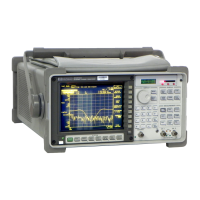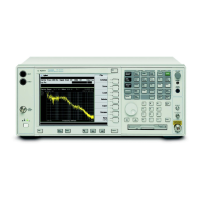Fitting Measurements With Delay
The curve fitter can have trouble finding a model when pure delay is present in
the measurement. A delay implies an infinite number of poles at dc.
Any pure delay in a system affects the phase of the frequency response without
affecting its magnitude. If these delays are known, they should be entered into
the curve fit table before starting a curve fit. Delays can occur in real data
from sampled systems or from transport delay in real systems. Pure delays
cannot be modeled with a finite-order rational polynomial in the s domain. For
more information on the effects of excess phase refer to product note Agilent
3562A-3,
Curve Fitting in the Agilent 3562A.
Fixed Poles and Zeros
You have the option to enter and “fix” known system poles and zeros. The
known pole-zeros can be obtained from curve fitting a compensator gain block
or from some synthesized analytical data combined with the measurement data.
When poles or zeros are fixed, the curve fitter assumes they are correct and
includes them as starting values in the next fit. Any pole or zero manually
added to the curve-fit table is also tagged as fixed. A fixed term is indicated by
“fxd” to the right of the term. The fixed line feature allows the results of one
curve fit to be included in the results of another. For example, a curve fit could
be performed on a narrow region around a resonance. The resonant pole from
this fit would be fixed and another curve fit performed on the entire frequency
span. Pole and zero locations found in the first fit and set as fixed are retained
and used in the second fit. This approach is useful in speeding up the curve
fitting process and improving fit accuracy.
Agilent 35607A
Curve Fit Option 1D3 Operator's Guide
16-24

